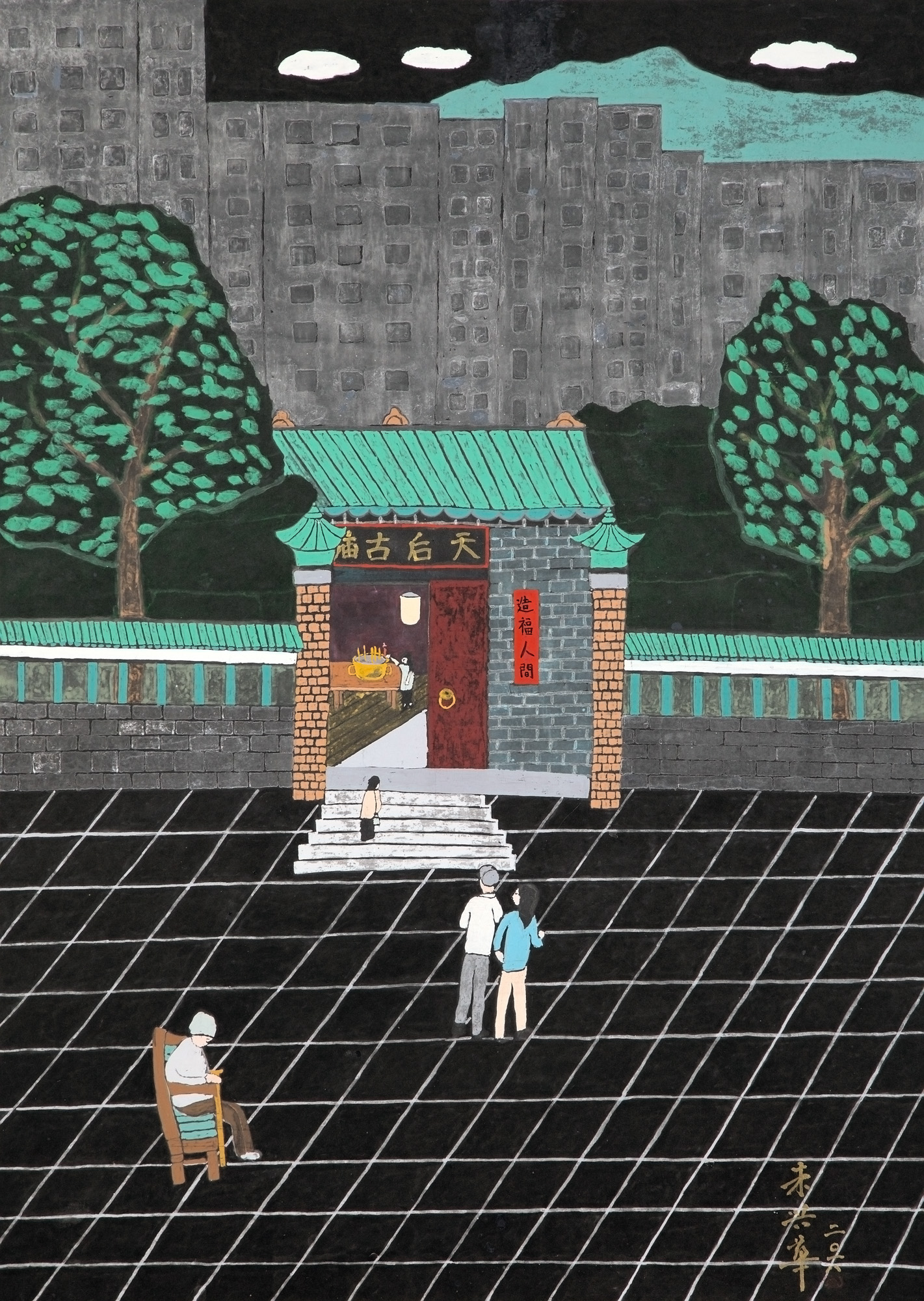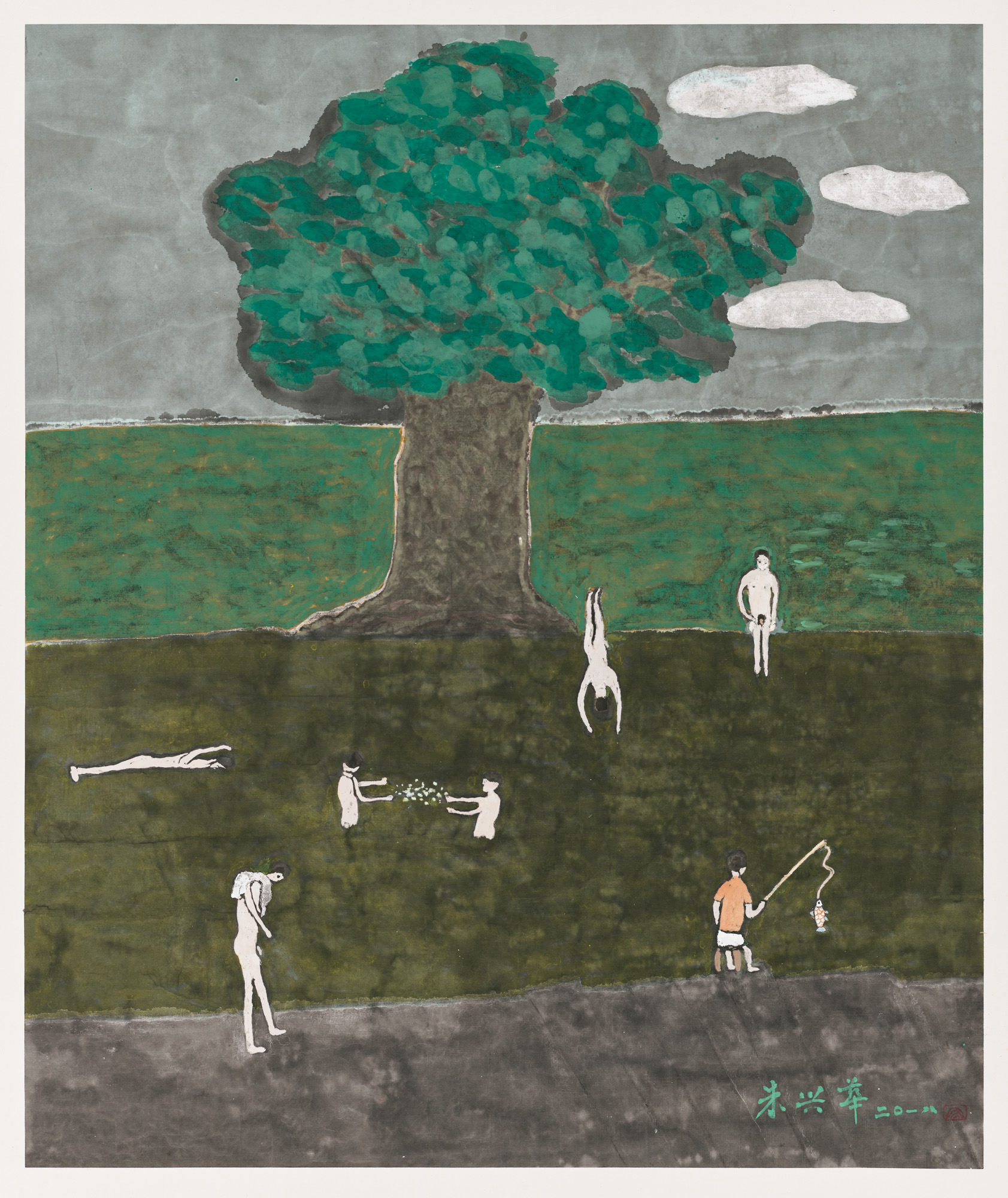Shows
Chu Hing-Wah’s “Bare Life”


Before Chu Hing-Wah became a full-time painter, who is now known for his contemporary ink paintings, he worked as a psychiatric nurse. Having witnessed the many psychological conditions and the rather grim aspects of life, his paintings later turn to celebrating everyday life with a search for purity and fond memories of the past. During the Mid-Autumn Festival—a time of gathering and nostalgia—Chu’s latest exhibition “Bare Life” opened at Hong Kong’s Hanart TZ Gallery, showcasing his most recent works completed after 2015, including the never-before-seen series Nude (2018– ).

Chu often portrays the city through a blend of styles that evoke a sense of nostalgia. The more widely known Cityscape (2018– ) series, for example, borrows its colors and compositions from traditional Chinese genre paintings. Instead of strictly following the technical accuracy and documentative nature of the genre paintings, however, Chu’s works are imbued with a more playful touch. A depiction of Yau Ma Tei, the neighborhood where Chu used to live, Tin Hou Temple (2018) illustrates a place that retains the lifestyle of the 1960s but had also undergone urban development. While the tiles on the floor and the Temple’s brick walls are depicted in concrete but imperfect lines and grids that recall the style of the genre paintings, the current-day skyscrapers and high-rise commercial buildings are obscured into blocks of gray in the background. The past, represented by the Tin Hou Temple, stands vividly in Chu’s portrayal of the city.
Similarly, in the painting Pokfulam Village (2019), the villagers—gathering in front of scattered, brown and gray village houses in the foreground—stand in contrast to the private apartment buildings (potentially the Chi Fu Fa Yuen residential complex) in the background, which is colored in an artificial bluish-green shade. While the village houses appear to be disorganized and weathered, the villagers’ lives look more spacious and livelier than the formulaic blocks of buildings behind. In Chu’s paintings, the stark contrast between the foreground and the background demonstrates the drastic changes in the living conditions in Hong Kong and how our living space has been shrunken by urbanization.

What transcended Chu’s longing for the past was his latest Nude series, which evokes painting traditions in primitivism. Highlighting this idea of a time before modernization, Age Before the Swimming Trunks (2018), for example, features a group of naked figures freely swimming and playing in a pool of water. Their gestures and expressions look unbothered by the social setting they are in. In a more romantic fashion, Primaeval World (2018) depicts three nude figures standing in a plain in a rather intriguing dynamic that stimulates the viewer’s imagination of their relationship: a woman secretly offers a flower to the man under the tree, while another man is standing in the distance. Amid what seems to be a love triangle, the sky and the land bleed into each other in varying shades of blue, brown, and gray, evocative of the pigments used in prehistoric cave murals. Contrasting the overall solemn tone covering most of the canvas, the tiny yellow flower in the woman’s hand is accentuated, symbolic of a simple gesture of love that has preexisted the chaos of progress. Primitivism, in this way, aligns with Chu’s practice, not only for its grief over the loss of paradise, but also for its urge to look past the superficiality of modern material life and return to the original state of being.

In Hong Kong, where one couldn’t help but constantly look back to grasp a more coherent historical narrative, nostalgia has become a prominent element, or even a marketable cliché in the local culture. While it is convenient to choose to see Chu’s works through a rosy nostalgic filter, one would easily overlook the childlike genuineness and earnestness encapsulated in his strokes. This is especially so for the Nude series, a search for innocence and an honest attempt to portray the nature of humanity, as hinted in the exhibition title “Bare Life.” An artist dedicated to painting and eager to return to his inner child, Chu showed us how in finding one’s innocence, one is able to remove all the masks imposed on them and reveal the reality of oneself.
Chu Hing-Wah’s “Bare Life” at Hanart TZ Gallery, Hong Kong, was on view from September 10 through November 5, 2022.
Sharpe Xie is ArtAsiaPacific’s editorial intern, and Pamela Wong is ArtAsiaPacific’s associate editor.







